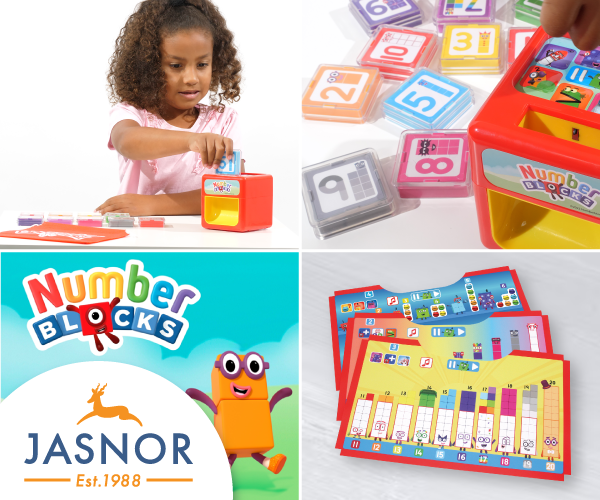Column written by — Christie Nicholas
Chief Growth Partner at Mumpower
There are over 6 million mums in Australia and they largely hold the cards to household discretionary spend. Based on previous ABS data, this is a total weekly amount of $1,425 per household. Discretionary spend by default includes within this amount all the core categories within the licensing industry including: food, FMCG, home products, clothing, personal care, everyday products for children, recreation, education and more.
The Covid-19 aftermath meant Mums’ shopping habits changed instantly. And as a result, raised more questions about what it will now take to shape an impactful marketing plan.
Christie Nicholas
Many companies have discovered that the era of planning 12, or 24 months ahead has temporarily disappeared. The world events has presented so much unpredictability, that planning 3-6 months ahead is more realistic. From May 25th – July 27th 2020, a four-part research investigation was conducted. This involved 820 Mum Shoppers to uncover how her changing habits will impact the economy moving forward and to identify trends and growth opportunities for Mum-centric brands.
Today, Christie Nicholas, head of Mumpower Shopper Insights explores 5 key questions any brand in the licensing industry needs to be across to feel informed and make decisions with certainty.
1. Is discretionary spending halted across all product and service categories?
There have been many financial lessons and realisations. The robust spending bubble that consumers enjoyed pre-Covid has certainly burst – or putting it mildly, changed shape. For half the audience, household spending has been tightened and there are plans to save more where possible. Spending will not stop altogether, but Mums will be a lot more careful about what they are buying.
Based on the feedback, Mums intended to spend more for products within the following categories:
- Supermarket/FMCG
- Health/Wellbeing
- Home
- Baby/Children’s Products
2. How much influence does the Mum Shopper have on discretionary spend?
A lot. New Mumpower Shopper Insight figures reveal that 72% of Australian Mums are largely responsible for the household discretionary spend. Followed by 27% of Mums who equally share decision making for the household budget with her partner. This is significant. While children and partners needs and wants shape Mums decision making, ultimately its mainly Mums who decide what products enter her home and her family’s lives. Building a relationship with Mums is critical to growth.
3. How has the online versus in store shopping experience been impacted?
The recent events has accelerated Mums movement towards online buying and enabled mums to overcome any resistance that previously existed with buying online. As a result, over half the shoppers continue to buy online more than they ordinarily would have. The overall online shopping experience is now more important to the shopper, increasing the pressure on brands to deliver and optimize the experience.
The growth in online has meant that the instore shopping experience has become less important to just under a third of the shoppers. However, there is still a preference to shop in store by consumers, with one in 5 shoppers stating the instore experience is even more important now. There is a role an instore experience plays in the overall buying journey that must be capitalized across all instore buying touchpoints to convert customers.
Given Mums will continue to buy more online, e-tailers are encouraged to address these 3 critical factors that Mums said will make or break a transaction including: 1) Offer competitive pricing, deals and added value, 2) Deliver a website that is simply awesome; this includes images, branding, easy to buy, and 3) Provide free delivery.
4. What are the most influential sources of information that consumers turn to before buying?
When similar research was conducted into shopper habits a few years back, it was 50% online touchpoints that influenced Mums decision to buy, versus 50% offline touchpoints. Now, we discover that it is 58% online touchpoints and 42% offline touchpoints that influence a sale.
There’s also been a significant change to the reliance and consideration mums place on: word of mouth recommendations, online research, brand to consumer communication. Licensed brands that have a strategic plan to leverage these touchpoints will benefit.
5. What are 3 key opportunities this research reveals to brand marketers in the licensing space?
1. Mums have increased interest in products for children as well as for the home. The opportunity for brands in this space is to understand and map out the real motivators behind her interest. Only then can brands reframe brand messages in a way that demonstrates empathy, foster emotional connections, and provide solutions to what she cares about most. And in the meantime – Maintain a brand dialogue to stay top of mind to be the brand of choice.
2. Working with Influencers will deliver more results – but there’s a catch. Brands have been investing in Influencer marketing for many years now because it works, and it’s a proven way to facilitate a third party endorsement, which is believable, relatable and important part of Mums decision making process. However, brands will need to go beyond reaching out to random names and short lived transactions that are less effective in maximizing consumer engagement and brand story telling. Brands who enjoy success with influencers will spend more time identifying and validating best fit, value-aligned influencers, customizing campaigns according to the influencers strengths and audience preferences, producing a complete variety of content types and making sure this content is leveraged across multiple touchpoints. This extra effort will deliver premium results.
3. Be more Customer centric than ever before in order to thrive. Customers have tightened their spending and have become more conscious consumers. They think very carefully about what they are buying to justify if it is worth it. Brands that gather an indepth understanding of the exact customer, her buying motivators, brand perception, sentiment across competitors and a thorough understanding of her buying journey are the brands who will gain a clear picture around the exact trigger points and leveraging points to influence and empower more Mums to make informed buying decisions for their brand over their competitors.
If you want to start building for the future, be across these latest insights. Contact Mumpower to find out more about the 54+ page Mum Shopper Report; The habits shaping the economy to access over 147 key current insights.










